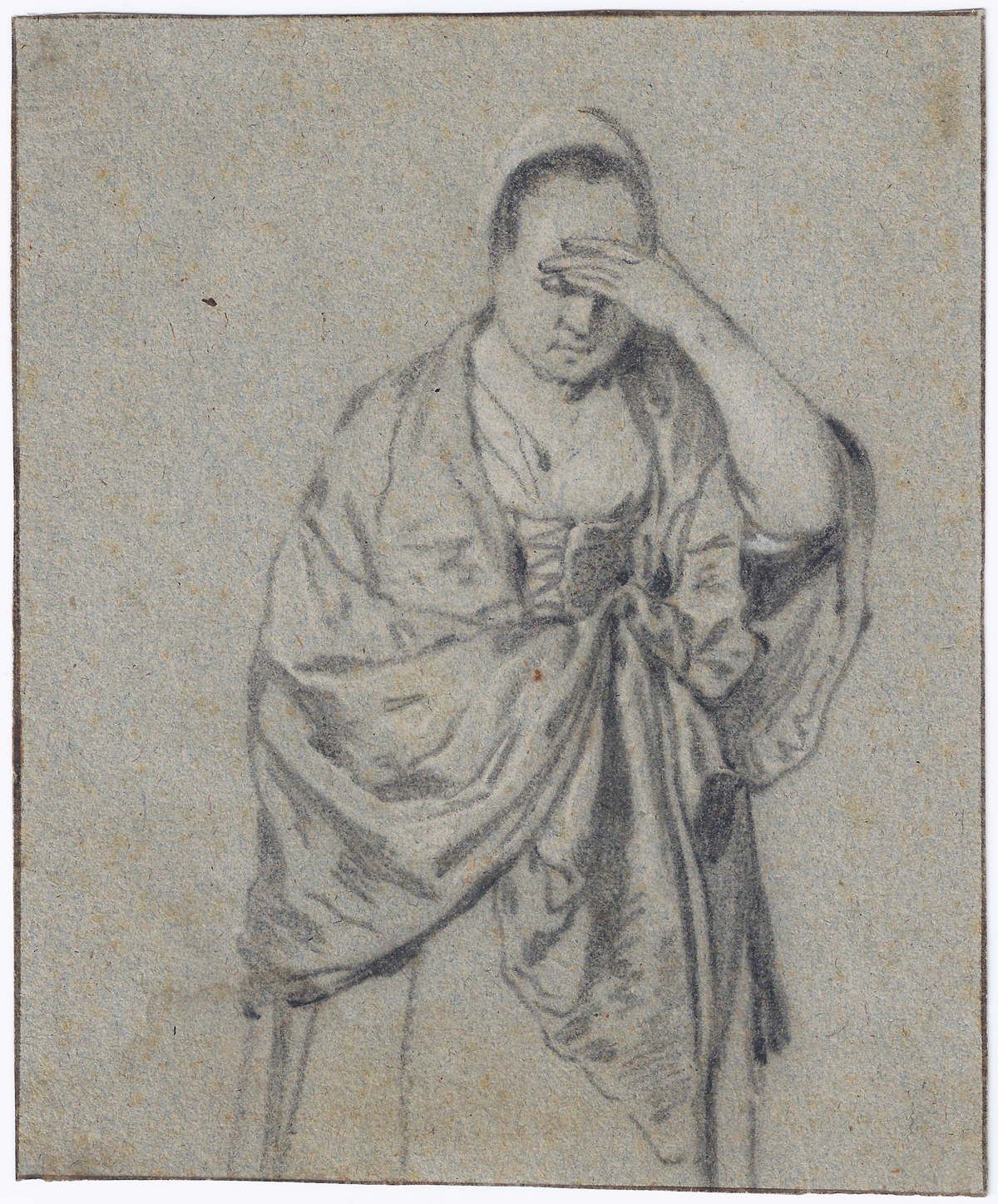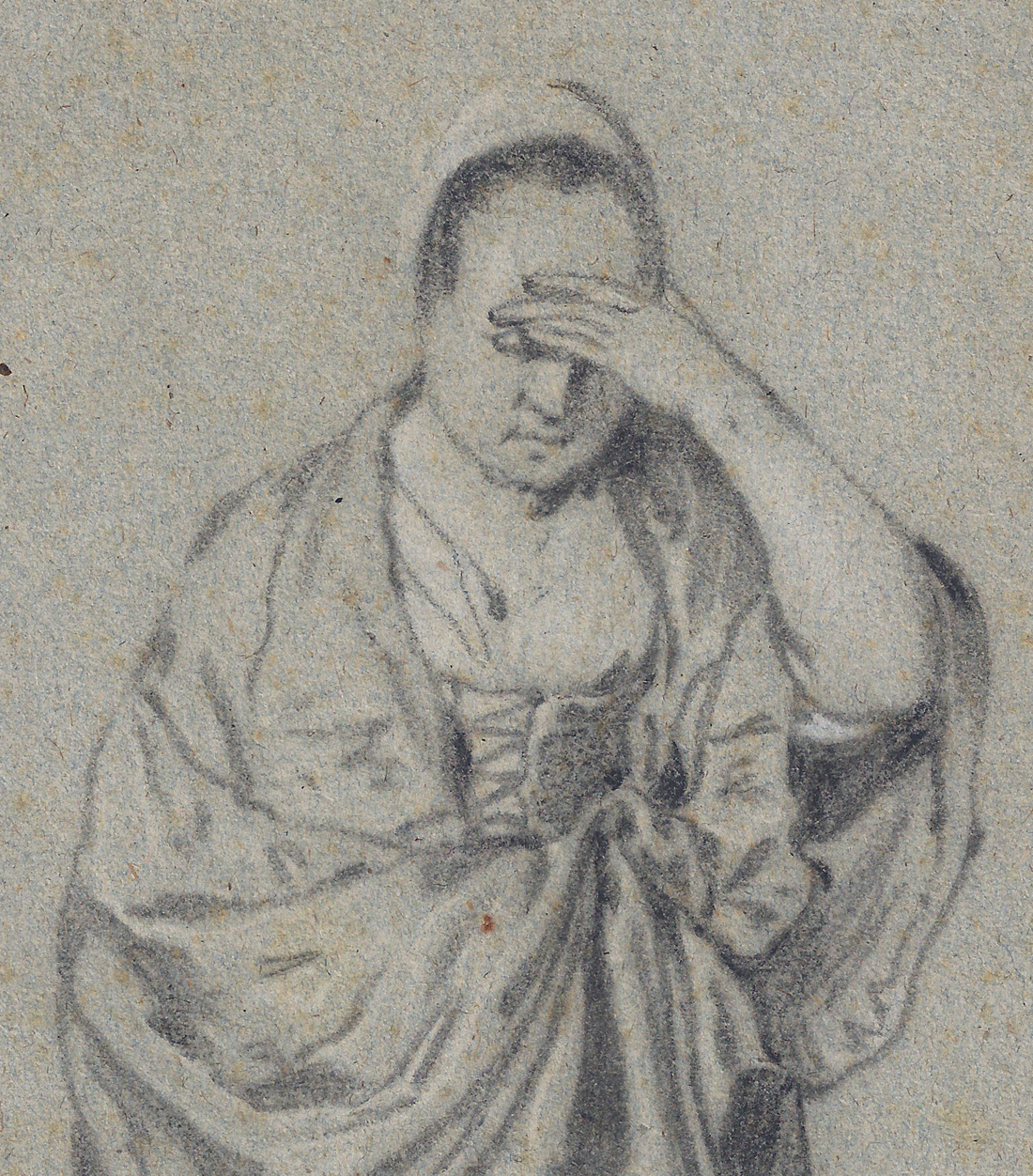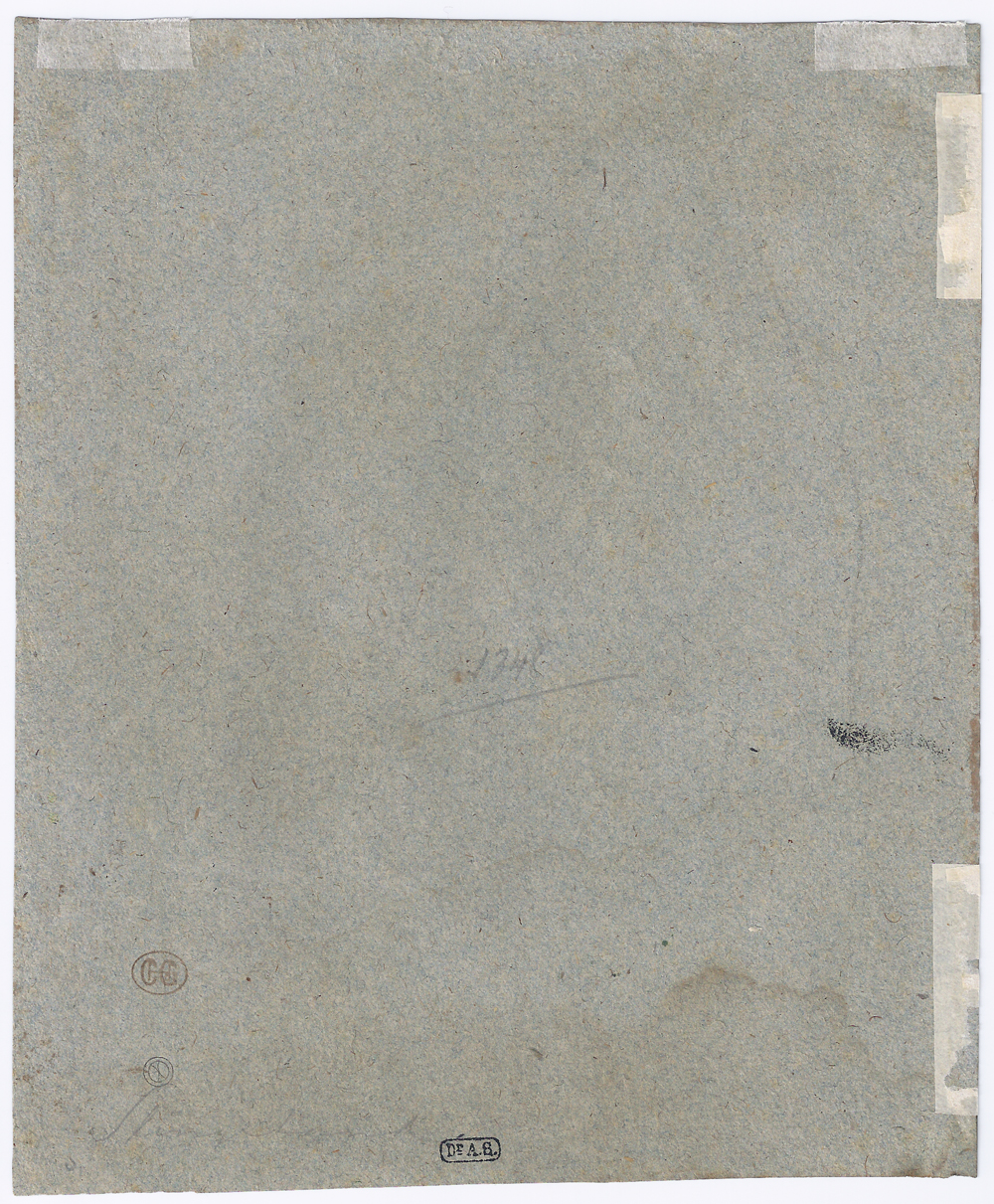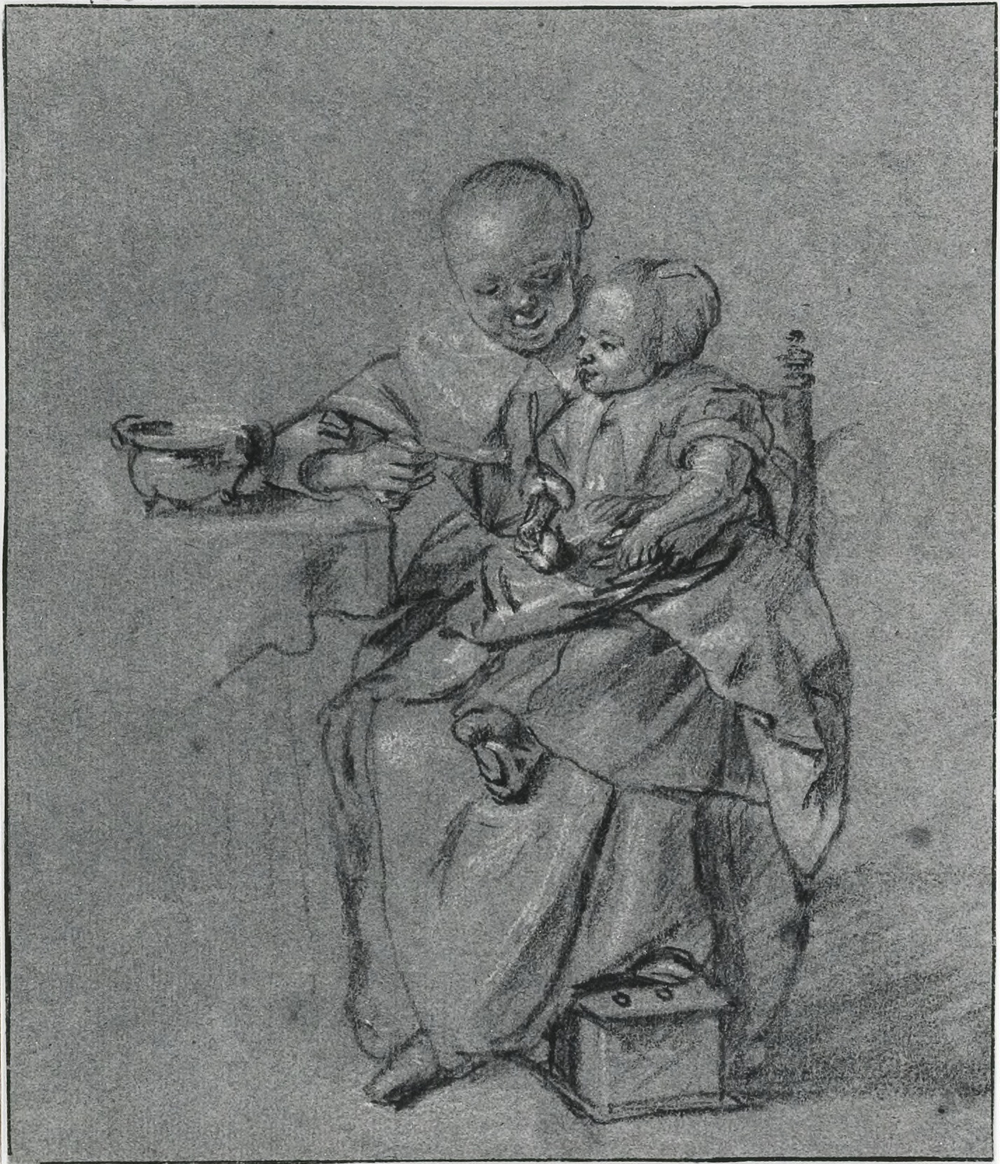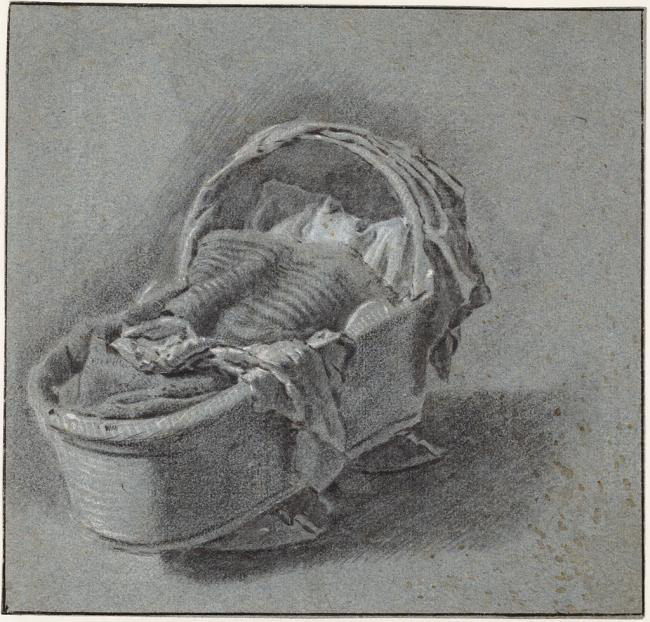PIETER CORNELISZ VAN SLINGELANDT (Leiden 1640 – 1691 Leiden)
Pieter Cornelisz van Slingelandt (Leiden 1640 – 1691 Leiden)
Study of a Woman Shielding her Eyes
Black and white chalk on blue-grey paper, black ink framing lines, 203 x 170 mm (8 x 6.7 inch)
Provenance
- Willem Baartz (1798–1860), Rotterdam
- Dirk Vis Blokhuyzen (1799–1869), Rotterdam
- Dr August Sträter (1810–1897), Aachen (Lugt 787)
- Rudolf Philip Goldschmidt (c.1840–1914), Berlin (Lugt 2926) (as Jacob Backer); his sale, Frankfurt, 4 October 1917, lot 543, acquired for 41 Marks by:
- Dr Cornelis Hofstede de Groot (1863–1930), The Hague (Lugt 561); his sale, C.G. Boerner, Leipzig, 4 November 1931, lot 307 (sold to ‘Brand’ for ’34 Marks’)
- Private collection, Canada, until 2015
***
Pieter Cornelisz van Slingelandt, a mason’s son, was baptized on 4 November 1640.1 He appears to have spent his entire life in his native city of Leiden, where he joined the painters’ guild in 1661 and is recorded as a member throughout the 1660s and 1670s. In 1690, he served as hoofdman (headman) and in 1691 as dean of the guild, until his death on 7 November. No marriage is recorded. Van Slingelandt received his artistic training by Gerrit Dou (1613–1675), and together with Frans van Mieris (1635–1681) is one of his most important students, and one of his most faithful followers. He is considered one of the leading members of the Leiden school of ‘fijnschilders’ (fine painters), though slightly less talented than his master Dou and his fellow-pupil Van Mieris.
Like Dou, Van Slingelandt employed a highly time-consuming painting process to achieve his meticulous and jewel-like cabinet pictures. Houbraken recorded that he spent four to six weeks painting a single lace ruff, and his portrait of the Meerman family took no less than three years to complete. Van Slingelandt’s prices were consequently steep and among the highest of contemporary Dutch artists: the Meerman portrait cost 1500 guilders (at a time when the annual rent of a good house was around 200 guilders a year). The French diplomat Balthasar de Monconys, who visited the studios of leading Dutch painters in 1663, including those of Vermeer, Dou, Van Mieris and Van Slingelandt, was taken aback by the price of 400 livres asked by Slingelandt for a ‘petit tableau’; Monconys’s offer of 60 livres was declined.2
As a draughtsman Van Slingelandt is perhaps best known for his carefully finished portrait drawings, sometimes on vellum, such as the portraits of an unknown husband and wife in the Rijksprentenkabinet, Amsterdam.3 In addition, a small group of studies in black and white chalk on blue paper is known, which includes the present intimate sheet. The art historian Dr Cornelis Hofstede de Groot, the former owner of our drawing, observed that they are similar to studies by Jacob Backer and Govert Flinck, whose work may have been known to Van Slingelandt. Our drawing can be compared to a Study of a Woman Feeding Porridge to a Child in Frankfurt (fig.),4 and also to a Study of a Cradle from the Van Regteren Altena collection, now in the Fondation Custodia, Paris (fig.).5 The attribution to Slingelandt was first proposed by Hofstede de Groot, who noted the familiarity to figures in kitchen pieces by Slingelandt.6
SOLD
1. For the artist, see: K. Langedijk, ‘Notities betreffende zelfportretten van Pieter van Slingeland’, Bulletin van het Rijksmuseum 10 (1962), pp. 85-88 and P. Hecht, De Hollandse fijnschilders. Van Gerard Dou tot Adriaen van der Werff, Amsterdam/Zwolle 1989, pp. 217-28.
2. Monconys is best known today for his visit to Vermeer, and his comment on a painting by this artist sold to a Delft baker for 600 livres, which he considered worth no more than 6 pistoles, a fraction of the price: “A Delphis je vis le Peintre Vermeer qui n'avoit point de ses ouvrages; mais nous en vismes chez un boulanger qu'on avait payé de six cents livres, quoiqu'il n'y eust qu'une figure, que j'aurois trop payé de six pistoles” (from his Journal des Voyages…, published in Lyon 1665-66).
3. Pen and black ink, grey wash, on vellum, 154 x 134 mm (each), inv. nos. RP-T-1903-A-4763 and RP-T-1903-A- 4764.
4. Black and white chalk on blue paper, 202 x 172 mm, Graphische Sammlung im Städelschen Kunstinstitut, Frankfurt am Main, inv. no. 2985.
5. Black and white chalk on blue-grey paper, 184 x 191 mm; Le Cabinet d’un Amateur: Dessins flamands et hollandais des XVIe et XVIIe siècles d’une collection privée d’Amsterdam, exh. cat. Rotterdam (Museum Boijmans Van Beuningen), Paris (Fondation Custodia), and Brussels (Bibliothèque Albert 1e) 1976-77, cat. no. 124, pl. 86 (entry by J. Giltaij).
6. Annotation in sale catalogue of R.P. Goldschmidt, Frankfurt, 4 October 1917: “Precies zoo als de vrouwtjes in zijn keukens”.
